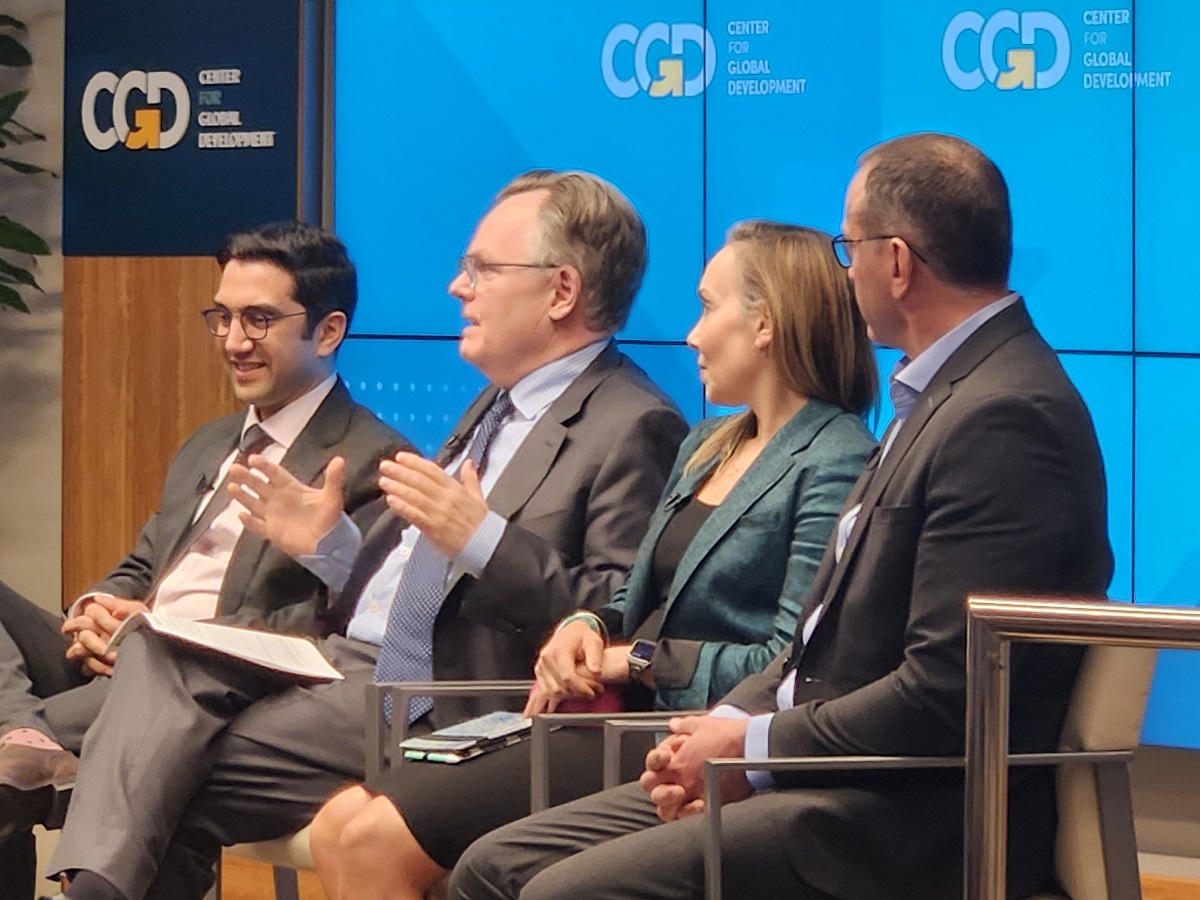The IMF’s new Resilience and Sustainability Trust (RST) has gotten a lot of support from donors wanting to recycle their IMF special drawing rights (SDRs). As of June 8, total pledges for the RST amount to $40.6 billion, falling $3 billion short of the initial fundraising target. With few recycling alternatives readily available to donors, the IMF raised its ambition for the RST during the recent Paris Summit, with the Managing Director calling for a 50 percent increase in RST funding—an additional $20 billion.
“We have seven countries that have benefited, and we have 40 countries expressing interest. And because of that, I want to announce today we are lifting our ambition to increase by 50 percent the size of the Resilience and Sustainability Trust, so we can respond to needs.”
Remarks by the IMF Managing Director Kristalina Georgieva at the Paris Summit Closing Press Conference
But does the RST possess the capacity to absorb this substantial increase in funding effectively? The short answer is no, unless the current restrictions to access the RST change. Leaders should explore other SDR recycling opportunities instead.
How much can countries borrow under the current rules?
The International Monetary Fund established the RST in April 2022 to help low-income and vulnerable middle-income countries address longer-term structural challenges that pose macroeconomic risks, notably climate change and pandemics. More than a year after its creation, the IMF has approved three disbursements under the new facility, five other countries have programs approved, and two other countries are waiting for board approval (Table 1). The IMF claims 40 countries have expressed interest in the facility.
Table 1. Current RST programs as of July 6, 2023
|
|
Countries
|
|
Disbursements approved
|
Rwanda, Barbados, Costa Rica
|
|
RSF approved
|
Costa Rica, Barbados, Rwanda, Bangladesh, Jamaica, Kosovo, Seychelles, Niger
|
|
Staff-level agreement
|
Kenya, Senegal
|
Despite this promising progress, recent analysis has highlighted certain hurdles in scaling up lending under the Resilience and Sustainability Trust. Countries seeking support from the RST must meet two criteria: (1) demonstrate high-quality measures in climate transition or pandemic preparedness, and (2) have a parallel IMF-supported program, with or without financing, that adheres to “upper credit tranche” (UCT) quality policies, with least 18 months remaining in the accompanying UCT program.
Let’s look at the numbers. 143 countries are eligible to access the RST. The RST's access policy determines the amount of money potentially available to each country. It sets a norm of 75 percent of the country’s IMF quota and caps access at the lower of 150 percent of quota or $1.33 billion. If the IMF's new ambition is met, we will have an RST of $60 billion. By design, 20 percent of this has to be put aside as a reserve, so $48 billion would be the loanable amount.
So, under the current rules, what is the maximum amount eligible countries can borrow?
- Only 26 out of the 142 eligible countries have a UCT program with at least 18 months remaining (see Table 2). Assuming each of these countries borrows up to the maximum allowed, the potential borrowing from the RST for these countries amounts to $16.1 billion, which falls significantly short of the total pledges.
- However, if countries with existing programs were allowed to extend their programs for up to 18 months (as Seychelles did when it accessed the RST), the number of eligible countries would increase to 49, potentially enabling them to borrow up to $32.5 billion, still falling below pledged amounts. In addition, as the previous blog cited noted, several countries out of the 49 are unlikely to request RSF support (e.g., Chile and Mexico) because they do not immediately need balance of payments financing. Countries like Sri Lanka and Somalia likely need more policy coherence to seek support under the RST.
- We calculated that to use up $48 billion of RST resources, a minimum of 16 countries beyond those with existing UCT programs would need to access the RST.
- At an extreme, if all eligible countries were to access support under the RST, then demand would increase to $88.13 billion.
Table 2. Maximum borrowing under the Resilience and Sustainability Trust
| |
Eligible countries
|
Maximum borrow amount
|
|
Countries with UCT programs with over 18-month remaining
|
26
|
$16.1 bn
|
|
All countries with existing UCT programs
|
49
|
$32.5 bn
|
|
Countries with existing UCT programs + more UCT programs
|
65
|
$48.0 bn
|
|
All eligible countries
|
143
|
$88.2bn
|
So to exhaust the proposed $48 billion of loanable RST resources, the IMF would have to negotiate at least 16 new UCT programs. As CGD colleagues pointed out earlier, negotiating and monitoring a UCT and RST program consumes a significant amount of IMF staff resources and substantial support from the partners (World Bank and World Health Organization) who lend climate/pandemic expertise to IMF staff. Are the boards of the various institutions prepared to allocate these resources?
An alternative approach would be for the IMF to revise the access policy by increasing the percentage of quota countries can borrow or removing the $1.33 billion cap, the latter of which currently restricts borrowing for six countries. Alternatively, the IMF could consider small on-demand tranches for the RST, as another CGD colleague has proposed. The earliest such a change could occur would be at the review of the RST scheduled for 2024 and require IMF Executive Board approval.
This announcement by the IMF Managing Director does not come as a surprise, as the global community is having difficulty figuring out what to do with the $100 billion of SDRs they have pledged to recycle. But it is certainly not clear that the IMF can absorb more through RST, so the raised ambition seems futile. Instead, donors should explore alternative options to channel their SDRs, like the African Development Bank’s hybrid capital proposal or an SDR-denominated bond issued by multilateral development banks. These proposals push central banks and governments into new territory. But innovation is needed if the world is to mobilize the money needed to deal with climate change and pandemic preparedness.
CGD blog posts reflect the views of the authors, drawing on prior research and experience in their areas of expertise.
CGD is a nonpartisan, independent organization and does not take institutional positions.







